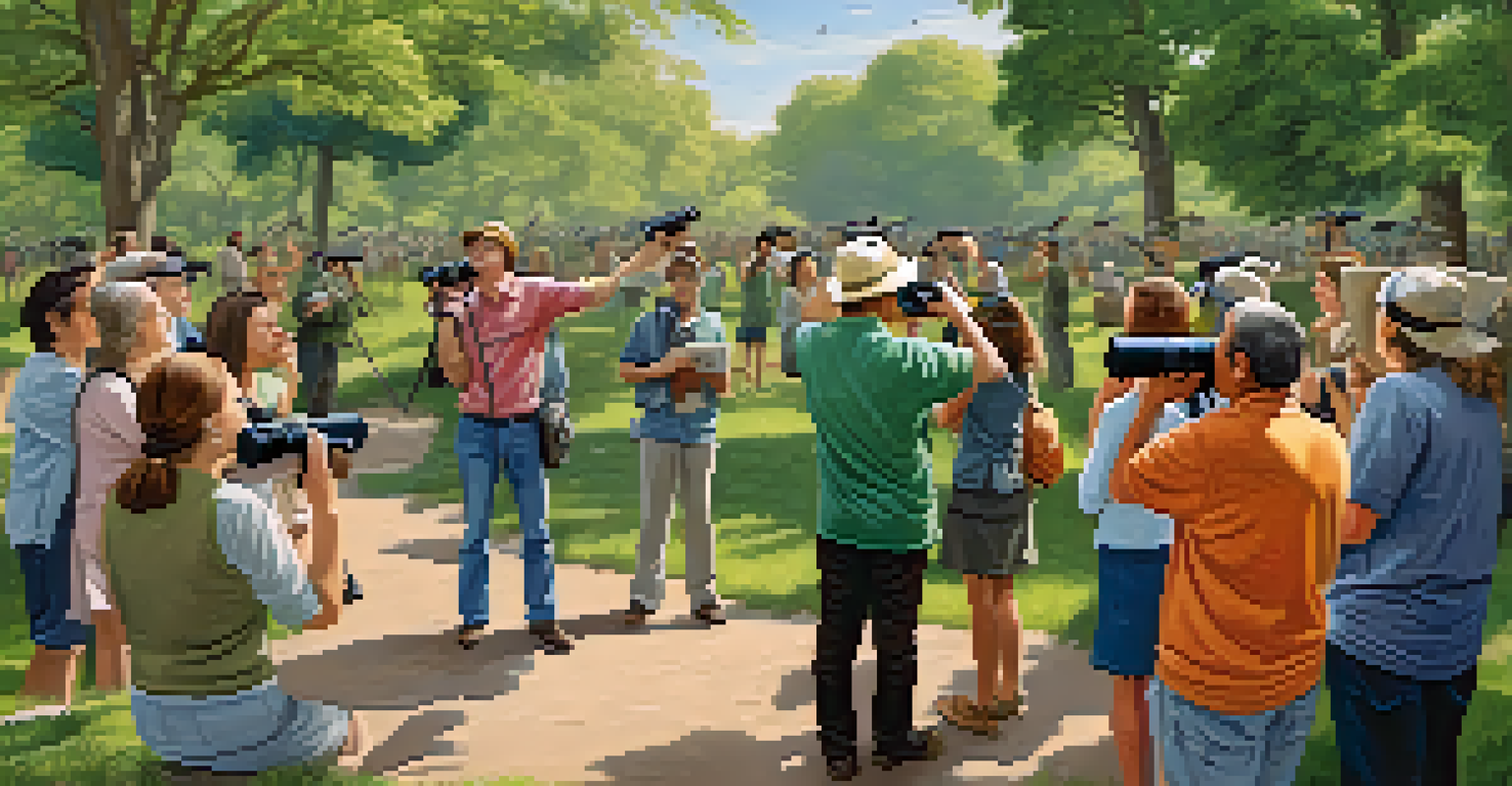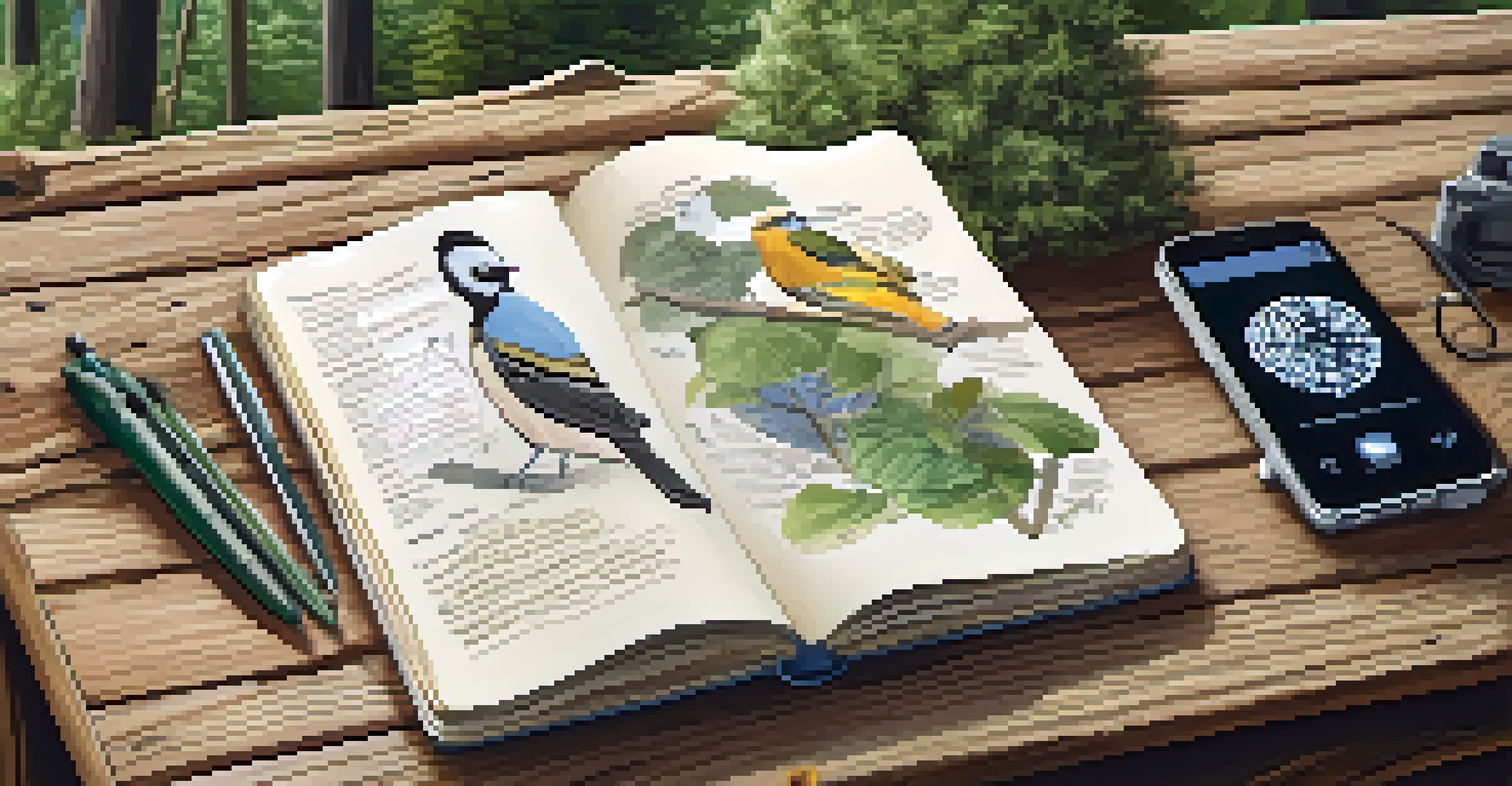How to Participate in Citizen Science Bird Projects

What is Citizen Science and Why Birds?
Citizen science is a collaborative effort where everyday people contribute to scientific research. This can involve collecting data, making observations, or even analyzing results. Birdwatching is a popular entry point because many people enjoy observing wildlife in their backyards or local parks.
In every walk with nature one receives far more than he seeks.
Birds are excellent indicators of environmental health, making them valuable subjects for study. Their migrations, behaviors, and population trends can reveal important information about ecosystem changes. By participating in bird-related citizen science projects, you can help scientists gather critical data that would be hard to obtain otherwise.
Moreover, engaging in these projects fosters a deeper appreciation for nature. You not only contribute to science but also enhance your understanding of the avian world around you. Whether you’re a seasoned birdwatcher or just starting, there’s a place for you in citizen science.
Finding Bird Projects to Join
There are numerous citizen science projects focused on birds, so finding the right one for you is essential. Websites like eBird and the Audubon Society list ongoing projects and allow you to filter by your location or interests. These platforms often provide resources and guidelines to help you get started.

Consider your personal interests and the time you can commit when selecting a project. Some initiatives require daily observations, while others may only need weekly or monthly updates. Pick a project that aligns with your schedule and passion for birds to ensure a fulfilling experience.
Citizen Science Empowers Everyone
Citizen science allows everyday people to contribute valuable data to research, particularly through birdwatching.
Additionally, local birding clubs or nature centers may host their own citizen science initiatives. Joining these groups can provide hands-on guidance and foster connections with fellow bird enthusiasts. Collaborating with others enhances the experience, making it more enjoyable and educational.
Signing Up for Projects: First Steps
Once you’ve selected a bird project, the first step is usually to create an account on the project’s website. This may involve providing basic information such as your name, email, and location. Some platforms may also require you to complete a quick tutorial to familiarize you with their data collection methods.
The Earth is what we all have in common.
Next, you may need to download an app or a specific tool to record your observations efficiently. Many projects have user-friendly apps that make it easy to log sightings on the go. These tools often include features like bird identification guides, making it simple for beginners to participate.
After signing up, take some time to review the project guidelines. Understanding what data is needed and how to submit it will enhance your contributions. Familiarize yourself with any specific protocols or timelines, so you’re well-prepared to start your birdwatching journey.
Essential Tools for Birdwatching
To participate effectively in citizen science bird projects, having the right tools can make a significant difference. A good pair of binoculars is essential for observing birds up close without disturbing them. Look for binoculars that are lightweight and offer a wide field of view, especially if you're new to birdwatching.
Additionally, a field guide or a bird identification app can be incredibly helpful. These resources provide information about various bird species, including their calls, habitats, and behaviors. Many apps even offer features like sound recordings, which can aid in recognizing birds by their songs.
Find the Right Bird Project
Numerous platforms like eBird and the Audubon Society help you locate bird-related projects that match your interests.
Lastly, consider keeping a notebook or using a digital platform to log your observations. Recording details such as date, location, weather conditions, and the species you see can enhance your contributions. This not only helps you track your progress but also aids scientists in analyzing the data you provide.
Birdwatching Etiquette: Best Practices
As you embark on your birdwatching adventures, practicing good etiquette is essential. This includes respecting wildlife and their habitats. Always maintain a safe distance to avoid disturbing birds, especially during nesting season when they are particularly vulnerable.
Additionally, be mindful of your surroundings and fellow birdwatchers. Keeping noise levels down and avoiding flash photography can create a more enjoyable experience for everyone. It’s also courteous to share the space and provide room for others to observe as well.
Lastly, consider the impact of your presence on the environment. Stay on designated paths and avoid trampling vegetation. By practicing these best practices, you contribute to a sustainable birdwatching culture that benefits nature and your fellow enthusiasts.
Submitting Your Observations: Tips and Tricks
Submitting your bird observations is a crucial part of citizen science. Most projects provide specific instructions on how to log your data, which may include online forms or mobile apps. Make sure to follow these guidelines closely to ensure your contributions are accurate and valuable.
When documenting your sightings, include as much detail as possible. Information such as the number of birds observed, time of day, and specific behaviors can enhance the data's usefulness. The more precise you are, the better scientists can analyze the information you provide.
Community Enhances Birdwatching
Participating in birding events and sharing experiences fosters a sense of community and deepens your understanding of avian life.
If you encounter challenges, don't hesitate to reach out for assistance. Many citizen science platforms have forums or support teams to help you navigate issues. Remember, your contributions are important, and asking questions is a part of the learning process.
The Joy of Community in Birdwatching
One of the most rewarding aspects of participating in citizen science bird projects is the sense of community. Many projects encourage collaboration and sharing among participants, fostering connections between bird enthusiasts. Engaging with others who share your passion can lead to friendships and opportunities for learning.
Participating in local birding events or workshops can further enrich your experience. These gatherings often feature expert speakers, guided birdwatching outings, and discussions about conservation efforts. Being part of a community amplifies your enthusiasm and deepens your understanding of birds.

Moreover, sharing your observations on social media or community forums can inspire others to get involved. Celebrating your findings and experiences not only contributes to a collective knowledge base but also motivates new birdwatchers to explore their local environments.